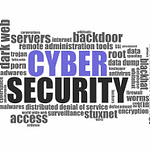Amid digital disruption, Human Resources is often the unsung hero – ensuring employees thrive amidst seismic changes in the workplace. Today’s HR professionals are not just people managers; they are strategic partners, culture champions, and data aficionados. But now, they must wear a new hat as well – the tech maven. Harnessing the power of technology isn’t just about keeping up with the times; it’s about ensuring that your HR operations are as efficient, effective, and forward-thinking as the company you support. This blog post is your comprehensive guide on how to integrate technology seamlessly into HR functions while maintaining the focus on what matters most – the human element.
Implementing an Employee-Owned Results (EOR) Model
The EOR model is a harmonious blend of employee autonomy and technology that fosters an environment where staff are empowered to manage their time and priorities, with results as the key metric. The ability to discover comprehensive EOR solutions is an invaluable asset for HR professionals and organizations. It allows for a more engaged workforce, greater productivity, and streamlined processes. Start with goal-setting tools and Key Performance Indicators (KPIs) that are easily accessible and transparent. Software solutions like OKR (Objectives and Key Results) frameworks and performance management dashboards can demystify the alignment between individual contributions and company-wide objectives, encouraging initiative and fostering a sense of ownership. The tech element not only drives clarity but also paves the way for continuous feedback mechanisms, where employees can solicit advice and recognition through digital platforms, in real time and on their terms.
Automating Repetitive Tasks
Repetitive HR tasks such as data entry, specific document processing, and routine communications can engulf your team’s time without adding any strategic value. This is where automation steps in, liberating your HR professionals from the shackles of monotony and allowing them to engage in more meaningful work. HR-specific platforms and tools can automate onboarding processes, manage time and attendance, and facilitate leave management, while also ensuring that compliance and regulatory requirements are met. The result is not just a more efficient operation, but a reduction in human errors, and most importantly, more time that can be invested in crafting a delightful employee experience. Most software also offers robust reporting capabilities, providing valuable insights into employee satisfaction and operational efficiency.
Utilizing Data Analytics for Decision Making
Nothing speaks the language of the modern business world quite like data. In HR, data analytics can revolutionize everything – from talent acquisition and retention strategies to workforce planning. Advanced HR analytics tools, when integrated into your existing systems, can help you identify trends and insights concerning employee satisfaction, productivity, and even potential for attrition. Armed with such data, HR professionals can make more informed decisions, tailor strategies to meet specific workforce needs, and even predict future talent requirements with uncanny accuracy. The heart of this technology, however, is not the data itself, but the actionable intelligence that it provides. Hence, it’s vital to not just accumulate data but to interpret it in a manner that feeds into the continuous improvement of HR initiatives and, by extension, the organizational culture.
Adopting Agile Methodologies
The concept of ‘agile,’ a term originally born in the software development world, is now permeating into HR practices. Agile HR methodologies emphasize flexibility, collaboration, and the rapid iteration of processes, mirroring the nuances of the modern workforce. In practice, Agile HR means breaking down traditional silos and fostering cross-functional teams, which can be facilitated by digital project management tools like Trello, Asana, or JIRA. This approach allows for a more fluid, dynamic response to business needs and ensures HR is always in step with the company’s strategic direction. Furthermore, agile methodologies encourage a culture of learning and development, where technology-enabled learning platforms can provide on-demand resources, supporting upskilling and reskilling efforts by rapidly evolving job roles.
Streamlining Communication Channels
In the digital age, communication is not just about broadcasting messages; it’s about engaging in a dialogue that is continuous, meaningful, and, more importantly, two-way. HR communication that is streamlined and transparent can empower employees and reduce the noise often associated with information overload. Enterprise Resource Planning (ERP) systems that tie together HR, finance, and other operational functions can ensure that all departments are singing from the same hymn sheet. Internal communication platforms like Slack or Microsoft Teams, integrated with more formal digital HR processes, ensure that relevant updates, policy changes, and other important HR communications are disseminated promptly to the right people, reducing ambiguity and misunderstandings.
Investing in Employee Training
Investing in employee development is quintessential in fostering talent and maintaining a competitive advantage. With technology, the possibilities for training are endless. Online learning platforms, virtual classrooms, and even augmented reality training can provide highly personalized development experiences that cater to the needs of individual employees. Moreover, these platforms can keep training budgets in check, as they often offer scalable solutions without the need for expensive in-person seminars or conferences. The tech-enabled learning experience does not just impact the present – it also sets your organization up for a future where learning is no longer confined to specific points in an employee’s journey but is a constant, adaptive process.
Periodically Reviewing and Updating Processes
Finally, as with any meaningful endeavor, the key to successfully integrating tech into HR is a willingness to review, reflect, and revise. Technology evolves at a blistering pace, and unless HR processes are periodically reviewed and updated, they risk becoming not tools that enhance efficiency, but knots that slow progress. For this, HR professionals need to be part futurists, part detectives – anticipating the shifts in workplace dynamics and sleuthing out the technologies that will ensure the continued success of their people operations. For HR to remain the unsung hero in the digitally disrupted world of work, it must continue to adapt and evolve, leveraging technology as an ally that propels both individual employees and organizations toward success.
Each organization will take its unique path, leveraging the tools that are most congruent with its values, culture, and strategic objectives. The common thread, however, is the need for technology to be an enabler, a facilitator of human connection and potential. In embracing this paradigm, HR enters an exciting new chapter – one where the possibilities for the employee experience are as boundless as the technological horizons it explores.
When HR professionals continue to evolve, learn, and adapt, they create a positive ripple effect that reverberates throughout an organization and its workforce. And when technology is integrated seamlessly into this equation, the potential for success is limitless. With the right tools, strategies, and mindset – HR can truly thrive in the digital age.













